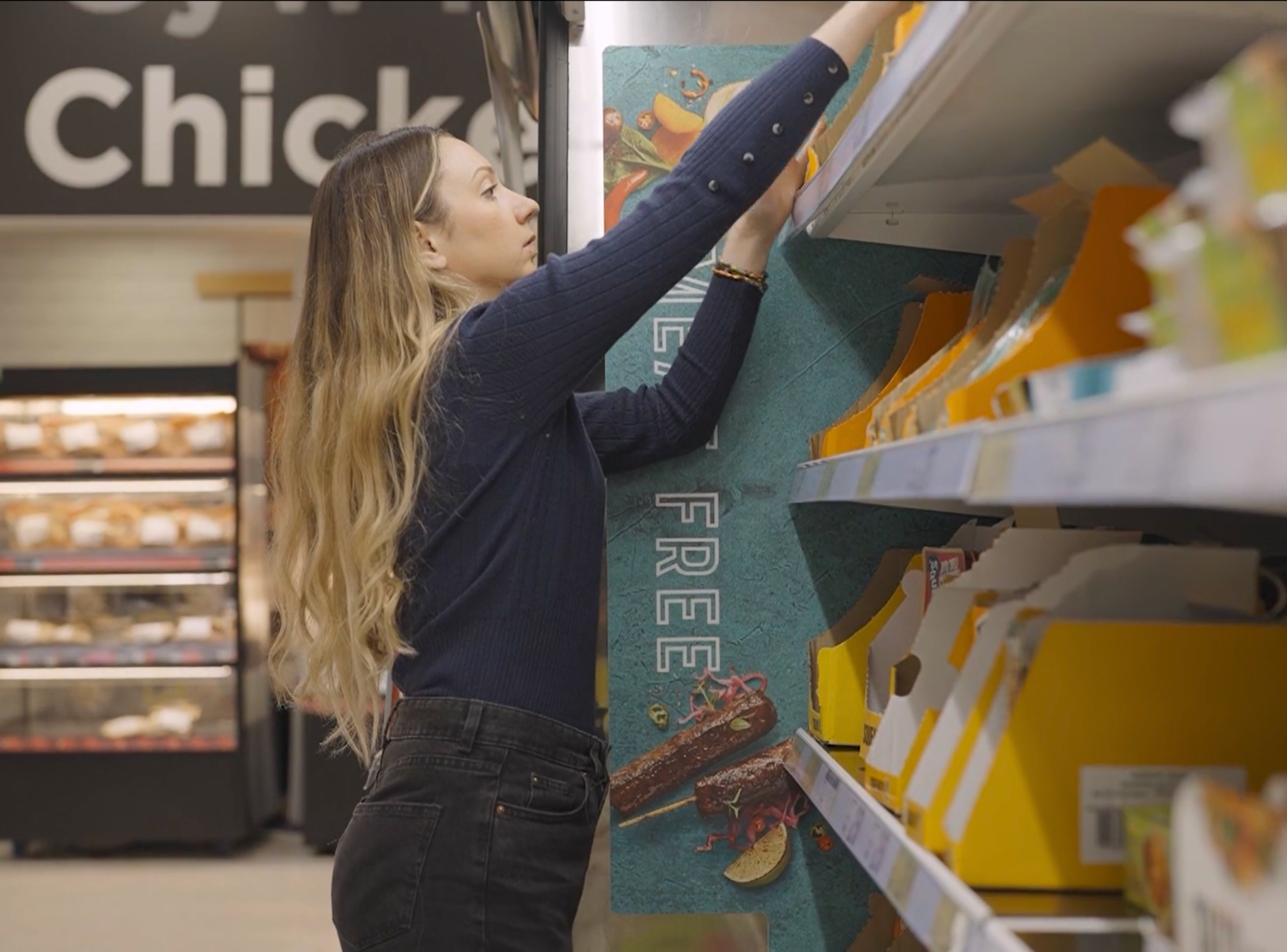When it comes to driving sales in the sector, food and retail marketing really have a lot to chew on.
Out of all the different product categories across the retail scale, food and consumables have to balance consumer demand and customer satisfaction at a knife’s edge – serving up the things that meet the mouths of the public day in and day out.
At Tactical Solutions, we know that manufacturing and product development might be at the top of your list of priorities.
But without decisive action on how your brand handles consumer behaviour, you could be selling to an empty aisle. That’s why agile marketing management is crucial when it comes to controlling the way that potential customers interact with your offering.
In this guide, we’ll cover the absolute be-all and end-all when it comes to driving growth in food and retail marketing.
Our expert team will pull on decades of consumer research and retail sales tactics gleaned from across the food sector and beyond, giving you the lowdown on what gets stock sailing.
In this guide, we’ll touch on:
- Competitive strategies that create a consumer paradise
- The importance of brand messaging in the retail sector
- Utilising multi-channel retailing to make big changes
- The power of data-led insights
- How Tactical Solutions can transform your retail strategy
- And much more!
Ready to take on the retail industry?
Whether you’re ready to release a new farm-to-fork strategy or unveil a brand-new product line, make sure you have all the crucial ingredients for a delicious offering. But before you angle for a supermarket sweep, get in touch with Tactical Solutions’ leading Field Sales Teams.
All it takes is a quick chat with our team, who will take the time to get to know you, your brand and your unique needs – as well as the scope of challenges facing you and your customers.
We’ll be able to pinpoint the biggest issues in your sales pipeline, such as identifying underperforming stores and implementing interventions, carrying out person-first store calls, and using industry-leading technology to glean incredible insights.
From here, we give you the tools and pointers to make true-to-life changes that make real results.
Who said you can’t have your cake and eat it?
At Tactical Solutions, we’re all about licking the plate and going back for seconds.
Let’s get started.
The Importance of Target Markets and Customer Satisfaction
Listen, no matter how good of a seller you are, it’s likely that you won’t be able to make a product that appeals to everyone – but if you do, give us a call.
Even though it sounds like a no-brainer, the key to driving sales in retail is to first figure out who you’re selling to. This will not only determine the kind of products you’re actively developing but help you go the extra mile when it comes to accommodating the people you’re selling to.
Marketing plans for new products need to identify the target market – the target market can inform product specifications, packaging, and distribution of a new product.
After all, a brand new product must satisfy a need or solve a problem – or in an ideal world, do both.
As such, marketing professionals discern and divide their consumers into four major segments:
- Demographic: A target market’s demographics define its main characteristics. Each person can be classified according to age, income level, gender, occupation, and educational level.
- Globalisation: In the era of globalisation, geographic segments are increasingly important. It is important to take into account regional preferences.
- Psychographic: The psychographic segment looks at lifestyles, attitudes, interests, and values beyond the basics of demographics.
- Behavioral: This segment analyses the decisions of the company’s current customers based on research. It may be possible to introduce new products based on research into the proven popularity of previous products.
You see, what makes up a huge portion of ‘selling’ a particular product is knowing exactly who it is made for – and who wants to snap it up. If you nail these basics, then you can easily nurture strong customer relationships through branded messaging and other marketing tricks (more on this later), with scope to grow a large user base.
With additional marketing, promotional activity, and good ol’ fashioned word of mouth, your products will speak directly to the people they were made for.
That’s why businesses spend a lot of time and money in defining their initial target markets, and why they follow through with special offers, social media campaigns, and specialised advertising.
But how do we make products talk? That’s branding, baby.
Increase Awareness with a Unique Brand Identity
A compelling product message has to come from somewhere. In marketing, there is no such thing as the ‘great beyond’ – but there is the ‘brand’ concept, and that goes beyond a catchy name and slapping the same colour on everything.
Branding encapsulates everything from the product on the shelf to the overall customer experience, which is something that can’t be bottled. That’s why it’s imperative to make sure that your offering stands out in a saturated market, while accurately representing your business and the values you – and your target audience – embody.
This can include everything from:
- Naming
- Branding
- Messaging
- Brand guidelines
A brand is a total experience for the customer – with a (hopefully) recognisable product. As such, it’s a tricky thing to stick a price on, but its ability to stoke loyalty and even subliminal trust is worth its weight in (invisible) gold.
But if you’re very keen on crunching numbers, a brand can be valued in two different ways: by stripping out assets or by comparing products.
Stripping Out Assets
If you need to be nosy at the equity a brand brings, take away the assets. Calculating a company’s brand equity is the simplest approach to placing a price on a brand, where you start with the enterprise value of a company and deduct identifiable tangible – and even intangible assets – such as patents. Then hey presto, the final result is the brand equity value of the business.
It’s important to note that it doesn’t show you how it plugs into revenue growth exactly, but it can give an overview of how much a company’s worth can be attributed to solid branding. Neat!
Product to Product
If you need to value the power of branding, investors may also pay attention to a company’s pricing power in an effort to account for the ‘unseeable’. Simply put, consumers want to know how much more the company can charge for its goods than those of its rivals in a similar sphere of influence.
The annual brand value can then be calculated by multiplying this premium by the number of units sold, which is key in showing where cold hard cash can be made.
But when push comes to shove, the power of branding can help a company go above and beyond when doing battle in a pricing face-off, beat a recession, create value for shareholders or improve operating margins.
Drive Growth with Omnichannel Marketing
When great customer experiences are what ultimately wins your target audience’s favour, ensuring all of your marketing channels are focused on your goals is imperative.
When nearly 35% of people say that having their problems solved quickly and easily will make them shop with a particular brand again – or that 91% of people would prefer to buy from someone that offers personalised experiences – an online shopping ‘arm’ can be a boon for brick-and-mortar retailers.
But what is an omnichannel approach?
It can be used for practically every area of retail, including those who work behind the scenes in the strategy suites to warehouses and stockrooms – even helping to get products off the shelf with the help of a consistent shopping experience. That’s because more and more people want to research their purchase before they commit, with a number of customers using mobile devices or a computer to check and compare prices, availability and more.
As such, a perfunctory visit to a single channel location – such as your humble grocery store – might not be enough to convince a buyer with what’s merely lingering on the shelf.
With an omnichannel approach, consistency is improved across multiple chain stores or product lines.
By using advanced analytics, you can smooth over issues at any point in the supply chain and spot inconsistencies with orders, so your team can swoop in and save the day – and the customer relationship.
“Data,” you say? “What’s all this about data?”
Don’t worry. We’ll touch on this next.
Data-driven insights for electric results
There’s power hidden right on your shelves. At Tactical Solutions, we fuel our insights with Reapp, the ultimate tool for collecting, collating and reporting data.
This stand-out analysis software suite can transform your business strategy, boosting sales with super-quick and super-in depth reports that can be produced at the click of a button – with the ability to pivot activity depending on what needs to be actioned.
Because the sooner issues are found and fixed, the sooner your retail efforts and revenue can be expected to grow.
But how can data insights transform output in the food and retail industry?
Stock and inventory management
A data analysis tool can keep watch on stock levels, ensuring that no customer goes without thanks to image recognition software. When placed in the hands of our field teams, we can help determine any gaps in availability and action a replacement in minutes, or give you the power to make real decisions in real time. Whether that’s on levelling up your inventory or figuring out which products need restocking (or leaving) – intuitive dashboards can give you everything you require with a few clicks.
Omnichannel marketing strategy
A data solution can also be used to streamline and support omnichannel marketing strategies too, especially when it comes to tracking the movement of data across a select number of products, retailers and channels.
This gives brands the ability to select the metrics they want to monitor, from total waste to promotional compliance, saving them time and money with useful information. As such, this is a great tool that can be utilised as a component of your omnichannel marketing strategy to increase performance, personalisation, consistency, and many other factors.
Plus, these metrics can give you the power to enhance overall cohesiveness across all marketing channels – so everyone’s working together.
Branding and sales
As we touched on earlier, branding is key for online channels and in-person stores alike. That’s why it needs to be consistent across all locations and properties, which can be difficult for retailers who are scattered up and down the length of the UK and beyond.
Luckily, a data-solution can help you to monitor branding and pick up any packaging differentiations.
It does this by monitoring omnichannel sales across industries, tracking both your own and your competitor’s activity in an easy and intuitive dashboard. Tuck and tweak datasets to find the best data for you and your business, or drill down deeper for more granular insights.
In doing so, your retail business can see what works, what doesn’t, and what can set you apart from the crowd – you might even make a new product discovery.
Growth has to start somewhere, so it’s important to make sure that everything is working from top to bottom to make sure your profits bloom.
Using Tactical Solutions to make marketing magic
We’re all about big ideas – and even bigger strategies – to drive growth in food and retail marketing.
But luckily, we have the brains to back it up. At Tactical Solutions, we have both expertise and technical ability to transform your retail strategy, so brands and retailers can rest easy knowing that their business is set to go above and beyond.
If you need merchandising or field marketing assistance, our in-house merchandising and field team is here to make sure you have the tools, manpower, and insight you need for in-store operations analysis and improvement.
You can also check out our case studies page to see how we’ve helped other retailers analyse and improve their operations. The proof is in the pudding, you know?




